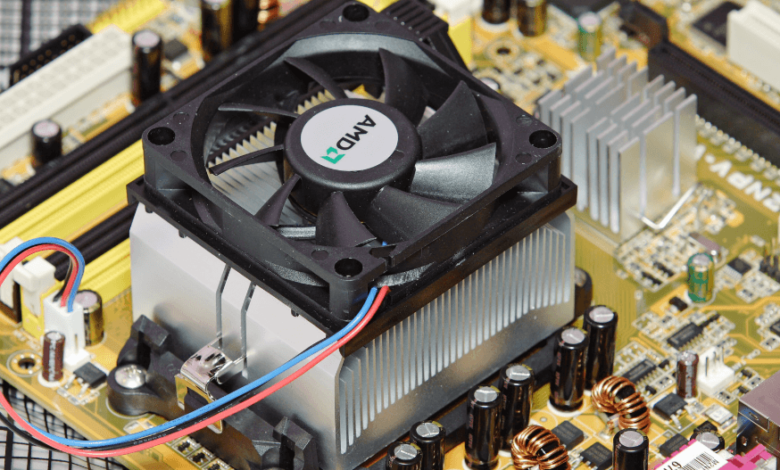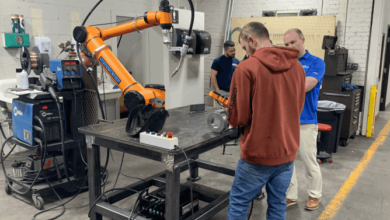Learning Heat Sinks: What is the Purpose of a Heat Sink

Heat sinks are important parts found in electronics like smartphones and gaming consoles. They help prevent overheating by pulling heat away from the device’s hot parts, keeping everything running smoothly and reliably. Discover what is the purpose of a heat sink, how they work, why they’re essential for keeping devices running longer, and how to choose the right one. These small components play a big role in preventing your tech from overheating.
What Is a Heat Sink?
A heat sink is a metal part (usually aluminum or copper) that helps cool down electronic components like your CPU or GPU, by pulling heat away and releasing it into the surrounding air or liquid. It doesn’t use power itself (it’s passive), but it’s crucial for keeping devices from overheating.
What It’s Made Of
Aluminum
Lightweight and affordable.
Good at moving heat (thermal conductivity: ~205–230 W/m·K).
Common in most computers and devices.
Copper
Excellent at conducting heat (~385–400 W/m·K).
Great for high-performance systems.
More expensive and heavier than aluminum.
Where You’ll See Heat Sinks
You’ll find heat sinks in almost all electronics that generate heat, such as:
Computers – CPUs, GPUs, chipsets, RAM, SSDs.
Power electronics – Transistors, voltage regulators, LEDs.
Industrial and home devices – Power supplies, inverters, LED lights, etc.
Why Heat Sinks Matter
Without heat sinks, your electronics would overheat, slow down, or even get damaged.
They help by:
Keeping temperatures safe.
Maintaining performance.
Extending the life of your hardware.
See also: Advanced Techniques in Bookkeeping 6622722878
The Purpose of a Heat Sink
A heat sink plays a vital role in keeping electronic devices like CPUs, GPUs, and LEDs, cool and functioning properly. Its main purposes are:
Heat Dissipation
The heat sink absorbs heat from a component and spreads it out over a larger surface area. This heat is then released into the surrounding air (or sometimes liquid). The fins on the heat sink help increase surface area, allowing faster cooling through airflow.
Temperature Regulation
Heat sinks help keep electronics at safe temperatures, preventing overheating that can cause errors, slow performance, or damage.
System Reliability and Longevity
Keeping temperatures under control prevents issues like thermal throttling (when performance slows to avoid overheating), sudden shutdowns, and long-term wear. This means your devices stay stable, perform better, and last longer.
Passive Cooling Advantage
Some heat sinks are passive, meaning they work without fans or power. They’re silent, reliable, and low-maintenance, perfect for quiet or low-power systems. In more demanding setups, heat sinks are combined with fans or liquid cooling (called active cooling) for enhanced performance.
A heat sink helps keep things cool, protect your hardware, and ensure your system runs smoothly for years to come.
How Heat Sinks Work
A heat sink cools devices by pulling heat away from hot components like a CPU or GPU. Here’s how it works:
Conduction – Heat Absorption:
The flat base of the heat sink touches the hot part, often with a thermal paste in between to eliminate tiny air gaps. Heat flows into the metal base, usually copper or aluminum, because these metals absorb heat well.
Conduction – Heat Spreading:
Once inside the heat sink, the heat spreads through metal fins or heat pipes. These parts have a large surface area, helping to distribute heat more evenly. Some heat pipes use a special fluid that turns into vapor and back into liquid to move heat quickly.
Convection & Radiation – Heat Release:
Natural convection: Warm air rises off the fins on its own.
Forced convection: Fans blow the hot air away faster for better cooling.
Radiation: A small amount of heat escapes as infrared energy, which helps in areas with limited airflow.
Together, these processes keep your electronics from overheating.
Benefits of Using Heat Sinks
Heat sinks are essential for keeping electronic devices cool and working well. Here’s how they help:
Removes Heat Quickly (Efficient Heat Dissipation)
Heat sinks pull heat away from hot components like CPUs, GPUs, and LEDs and release it into the air or liquid. This keeps the device from overheating or getting damaged.
Keeps Devices Running Fast (Improved Performance)
Cooler components can run at full speed. Without proper cooling, devices slow down to avoid overheating, a problem called thermal throttling.
Helps Devices Last Longer (Better Reliability)
Heat causes wear over time. Lower temperatures mean less stress on parts, which helps them last longer and work more reliably.
Quiet Operation (Passive Cooling Option)
Some heat sinks work without fans, using natural airflow. This means no noise, no power draw, and less maintenance, great for silent or low-power systems.
Small and Budget-Friendly
Most heat sinks, especially those made of aluminum are lightweight, compact, and inexpensive, making them perfect for laptops, mobile gadgets, and mass-produced electronics.
Flexible Designs
Heat sinks come in many shapes, sizes, and materials (like copper, aluminum, or graphite). This makes it easy to customize them for specific cooling needs and device layouts.
Saves Energy and Is Eco-Friendly
Heat sinks enhance cooling efficiency, often reducing the need for extra fans or energy-intensive cooling systems. Many are also made from recyclable materials, making them an eco-friendly choice.
Heat sinks are small but powerful tools that help electronics stay cool, run better, and last longer while keeping noise and energy use low.
Choosing the Right Heat Sink
Determine Heat Removal Needs
To pick the right cooling, first find out how much heat your component produces by checking its TDP (in watts). Keep the temperature below about 100°C for safety.
Select Material
Aluminum: Lightweight, budget-friendly, and works well for most everyday uses.
Copper: Transfers heat better than aluminum but are heavier and cost more.
Hybrid: Combines a copper base with aluminum fins to offer a good balance of performance and weight.
Choose Heat Sink Type
Passive: No fan, so it’s silent. Works best when there’s good airflow and enough space around it.
Active: Has a fan or liquid cooling system to move heat away faster, offering better cooling performance.
Advanced: Use heat pipes or vapor chambers to spread heat quickly and efficiently. They’re designed for high-performance or compact systems that need top-level cooling.
Match Fin Design to Airflow
Pin Fins: Good for irregular airflow.
Straight Fins: Best with consistent, directed airflow.
Flared/Cross-Cut Fins: Low resistance for slower airflow.
Validate Choice
Compare calculated and actual thermal resistance.
Check reviews or benchmarks for real-world performance.
Conclusion: What Is the Purpose of a Heat Sink?
A heat sink isn’t just a block of metal, it’s a key part of your device’s cooling system. Its main job is to take heat away from hot parts like CPUs, GPUs, or power units and release that heat safely into the air or a cooling liquid. Without a heat sink, your electronics could overheat, slow down, or even break.
Heat sinks work in three main ways:
Conduction: They absorb heat from the component and spread it through metal (usually aluminum or copper).
Convection: The heat is carried away by air, either rising naturally or pushed by a fan.
Radiation: A small amount of heat is also released as infrared energy.
There are different types, from quiet, fanless (passive) models to high-powered ones with fans (active or hybrid). Picking the right heat sink helps your device run reliably, last longer, and stay cool under pressure. A heat sink is a quiet hero that keeps your gadgets from overheating and helps them perform at their best.




